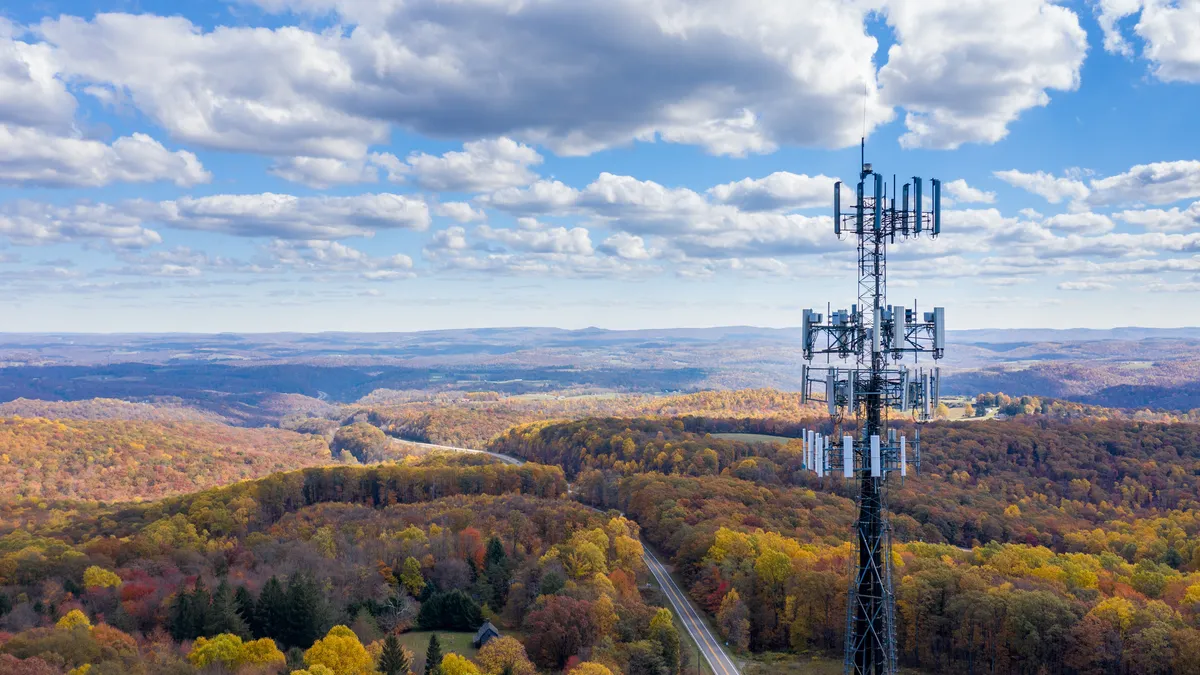The $1.2 trillion Infrastructure Investment and Jobs Act, which was signed into law in November, isn't just about roads and bridges. It provides $65 billion towards broadband expansion, which could change the way people work in the future, and from where they work — especially rural areas.
Carri Bennet, partner at Womble Bond Dickinson and general counsel to the Rural Wireless Association, compares the bill to the Rural Electrification Act of 1936, a Great Depression project that funded the installation of electrical distribution systems to rural areas across the U.S.
"When there wasn't electricity through the United States, we had to come up with a program to build electricity out to live anywhere," she said. "These days you have to have electricity and broadband."
For employers, this means a potential expansion of the talent pool. Seven in 10 employers plan to adopt a hybrid work model, according to a recent study by Mercer. Expanded rural broadband access could mean more potential employees, even as the impact of the bill won't be felt for years to come.
Big broadband funding — once details are worked out
The spigot of money hasn't been turned on just yet. "The devil is in the details," said Bennet.
Of that $65 billion pot, $42.45 billion will go towards the Broadband Equity, Access and Deployment Program, which funds competitive grant programs administered through states for qualifying infrastructure, mapping and adoption projects.
That program will allocate at least $100 million to each state plus the District of Columbia and Puerto Rico, along with $25 million to each of the U.S. Virgin Islands, Guam, American Samoa, and the Commonwealth of the Northern Mariana Islands. States and territories will draft and submit plans on how to use their broadband funds. Then companies can bid on that work.
The FCC will also be releasing a broadband map, as required by the Broadband DATA act, that identifies unserved locations in high-cost areas, with 10% of the total allocation of funds going to address those unmet, mostly urban, needs. The act also includes $2 billion in funding for the Tribal Broadband Connectivity Program, which supports broadband deployment on tribal lands.
Bennet estimates work won't begin until 2022 at the earliest, and projects could be further delayed if shortages in semiconductor chips and wire supply continue.
Regardless of the implementation timeline, the impact will be big, and long lasting, even if the road ahead isn't entirely clear.
"There's just no precedent for how this is going to play out. This is more money at one time than we've ever seen dispersed for new broadband infrastructure," said Ry Marcattilio-McCracken, senior researcher with the Institute for Local Self-Reliance's Community Broadband Networks Initiative.
Expanding access to local and far flung talent pools
Boosting broadband access for employees in rural areas could have global implications.
Better broadband access across the country could "also bring back jobs from overseas, from China, where a lot of production of the digital economy is taking place," said Bennet.
These pots of money can expand the talent pool for city-based employers in states with large rural areas, too. That's the case for Maine, where "rural" is everything from island to forest communities, and is also home to international companies like LL Bean and WEX.
Better broadband access "opens up your options. Instead of having to look in a geographical area where you're located, whatever the 'local area' means is now much bigger," said Nate Wildes, executive director of Live and Work in Maine. "A number of employers are wanting to invest and hire people who understand the value of being in Maine, but they don't necessarily need them in the office every day."
So a worker could live in their cabin in Northern Maine, but come to the employer's Portland headquarters in the southern part of the state once or twice a month, using a solid broadband connection in between.
The future workforce makeup
Even though the U.S. won't feel the full impact of the infrastructure bill for some time, it's not the only source funding broadband. But previous successful efforts can shed light on how this money might work.
Marcattilio-McCracken points to Chattanooga, Tennessee as an example. The city launched a community wide fiber-optic network in 2010, which has resulted in the creation and retention of 9,516 jobs, according to the University of Tennessee at Chattanooga.
The time to rollout also gives employers, especially hiring managers, opportunities to research how to hire and retain a partially or totally remote workforce.
John Dooney, HR knowledge advisor at the Society for Human Resource Management (SHRM), said that he hasn't heard of employers talking about how the Infrastructure Act will impact hiring just yet, but that companies at least now know that a hybrid or completely remote workforce is doable.
"Employers learned positive things about this. Managers learned how to manage around this," he said.
However, one recent SHRM study found that most managers don't like remote situations, with 67% saying they consider remote workers more easily replaceable than onsite workers, and 62% saying full-time remote work is detrimental to employees career objectives. Nearly three-quarters say they would prefer their subordinates to be working in the office.
But employers may not have a choice in moving forward with remote options, especially as more people become connected and want to stay put. "Those conversations may not happen right now, as companies are trying to retain who they've got," said Dooney.
Correction: This article has been updated to correct the spelling of Carri Bennet's name.



















